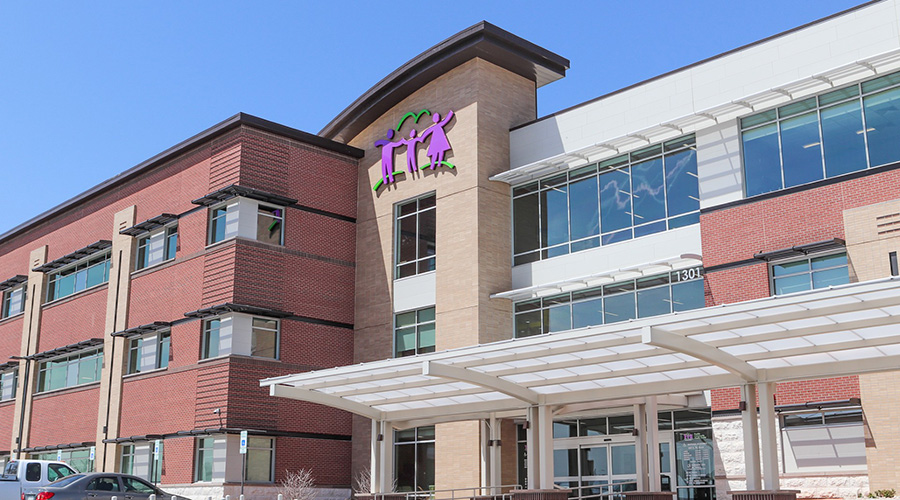Stores Slash Energy Costs
Investment in energy-saving technologies is a small price to pay for reduced electric bills
In the penny-pinching business environment in which retail facilities exist, energy is an expense that can be reigned in without having a corresponding negative effect on an organization. Cuts in other areas might save more money, but they don’t necessarily come without pain: displacing workers, which lowers morale and increases unemployment-compensation expenses.
“Being a warehouse club, we’re very cost-conscious,” says Sara Dill, manager of energy for BJ’s Wholesale Club, a chain of 142 membership-based wholesale clubs operating in 16 states along the eastern seaboard. “The second-largest controllable expense we have is energy. Payroll is the first.”
While commercial office facilities and educational institutions talk about the link between productivity and energy use, retail organizations connect energy use and sales figures. Understanding those links is critical for retail organizations considering energy reductions.
That’s why Rick Heithold, energy manager for Food Lion, an East Coast grocer with 1,200 stores in 11 states, looked at putting occupancy sensors in break rooms and storage rooms as a first step toward saving energy.
“A lot of the things we’ve done don’t ever touch the customer,” he says. “It’s a lot of backroom stuff.”
Bottom-line Benefits
Visible or not, the energy savings generate bottom-line benefits for Food Lion and other retailers. Estimates by the U.S. Environmental Protection Agency’s Energy Star® Program show that every $1 a grocer saves has the same effect on profits as selling $80 worth of merchandise.
Heithold estimates that energy accounts for 7 to 10 percent of Food Lion’s total operating expenses. In addition to lighting controls, the company has installed a centralized energy-management system to control lights and HVAC setpoints.
One big source of savings for the company, Heithold says, stems from new lighting technologies installed in the stores’ refrigerator and freezer cases. Lights in those cases are typically inefficient because of cold operating temperatures.
By partnering with a lighting manufacturer, however, Food Lion found a lamp that doubled light output and decreased energy use by 40 percent. Heithold estimates that the refrigerator case retrofits alone saved 100,000 kwh annually. The achievement won Food Lion an Energy Star Award for Excellence in Energy Management.
Efforts to reduce energy consumption at retail operations don’t stop with technology. They extend to employees.
“We can design the most energy-efficient buildings in the world, but they have to be operated efficiently to save money,” Heithold says.
Parisa Fatehi, program manager for Energy Star, says one of the notable best practices that Food Lion and other award winners undertake is to develop and promulgate an energy policy.
“Not all energy improvements have to cost big money,” Fatehi says. “There are low- and no-cost initiatives that can be undertaken, such as educating employees and changing behavior.”
Rare it is that retail operations out to save energy wind up finding a magic bullet that can kill all of their unnecessary energy expenses. Making substantial changes typically requires the installation of technologies as well as some educational outreach.
Much of the savings that BJ’s Wholesale Club realized came from converting overhead lights in its 140 stores from 400-watt metal-halide lamps to 350-watt metal-halide lamps with pulse-start ballasts. It saved more by retrofitting lights in office areas using T-8 lamps with electronic ballasts.
Dill, BJ’s manager of energy, says the company saves money through the lighting retrofits and by using a centrally controlled energy-management system that automatically turns lights on five minutes before a store opens and turns them off five minutes after closing. Exterior lights in parking lots and on storefronts are controlled by photocells.
Occupants Matter
Even though the system is centrally controlled, Dill says, store managers and facility personnel in each location play a pivotal role in making sure the system functions properly and in performing required maintenance. Each store is responsible for shutting off and turning on lights in some areas, such as the bakery and food court.
Without involvement from employees in its stores, which extend from Maine to Florida, Dill says the impact of the system would be lessened.
“The EMS is a great tool to help save energy,” she says. “But to maximize the benefits of the system, it requires a lot of work to optimize control strategies and keep the system maintained.”
BJ’s, also a recipient of the Award of Excellence in Energy Management from Energy Star, has been committed to energy conservation efforts for more than 10 years and a member of Energy Star since 1998. The first steps in its energy-management program, completed during the last several years, included energy-management systems, high-efficiency air-conditioning and refrigeration equipment, and chainwide lighting retrofits. With those basic energy retrofits done, Dill says, the company focused on bringing energy-saving efforts to the next level. First came expanding the use of the EMS, which in addition to lights regulates HVAC and refrigeration setpoints. Next came submetering to monitor the amount of energy used by the lighting, HVAC and refrigeration systems in its stores. All told, efficiency measures save an estimated $4.8 million annually on energy costs.
BJ’s started submetering primarily to better understand energy consumption and verify energy bills, Dill says, but the effort is being expanded to gather interval-metering data to spot anomalies in energy use at individual locations.
In addition to the $7.5 million BJ’s has spent on energy-efficiency technologies, the company has been opportunistic in finding other ways to save energy without greatly increasing risk.
In eight stores, BJ’s partnered with a green power marketing firm to help generate solar power.
BJ’s also participated in New York’s demand-response program last summer. The company agreed to cut lighting use in 25 stores during peak-demand times when the utility needed the power. Although there was a bit of a concern about the effect reduced light output would have on merchandising displays, Dill says, the decision to participate in the program worked to BJ’s benefit.
First, the company saved 50 kw per store in addition to receiving payments from the state for partaking in the program. Second, the program in which BJ’s participated was voluntary, meaning it didn’t have to reduce energy use if it felt the risk to its business was too great to justify the reduced energy use.
For the most part, however, Dill says customers understood why BJ’s was cutting back energy use.
“The California power crisis made the public more supportive of energy conservation efforts,” she says. “Even with half the lights turned off, people could still shop.”
BJ’s is working to find that right mix of educational efforts and technology to make sure reductions have a lasting impact with employees.
Dill says the company operates a game each month that asks store employees to spot wasted energy use and to fix it. The game, called the Killer Watt Gang, employs volunteer “sheriffs” at stores to be on the lookout for “villains.” The so-called villains could be lights left on or refrigeration doors being open unnecessarily.
Although BJ’s doesn’t track the results of the employee effort in any quantifiable way, it does reward stores with $500 to have a pizza party based on how well employees respond, Dill says. “Competition can be a great motivator for the Clubs. We get some excellent feedback from the program.”
Savings Opportunities Heat Up with Metal-halide Technologies
Facility executives have started cutting energy use is by using the latest pulse-start metal-halide ballasts in place of conventional probe-start ballasts.
Pulse-start ballasts have several advantages over conventional ballasts. First, the ballast allows for greater light output, meaning fewer lamps are needed. Bill Brosius, HID business director for Universal Lighting Technologies, says installations that once needed 100 standard 400-watt metal halide fixtures only require 71 fixtures using pulse-start technology. Depending on energy prices and the hours of operation, that change can save as much as $7,000 annually.
Lumen maintenance is another benefit of pulse-start technology. Donna Bard, product manager with Venture Lighting, says a 400-watt lamp that uses a conventional ballast will maintain 65 percent of its lumens. The same lamp using pulse-start technology can maintain as much as 80 percent or more of its lumens depending on the ballast.
Pulse-start ballasts work by sending a higher voltage of electricity to a lamp than a conventional ballast sends. That higher voltage means the lamp warms up quicker, in as little as five minutes.
The latest iteration of pulse-start technology — electronic pulse-start ballasts — give facilities more flexibility in controlling energy costs. John Cummings, senior product manager with Advance Transformer, says the electronic ballasts use about half as many watts as magnetic ballasts. In addition, the electronic ballasts are dimmable, meaning they can be tied into daylight harvesting systems and occupancy sensors.
“There are some nice features available on some of the electronic ballasts out there,” Cummings says.
One benefit of metal-halide lamps, regardless of the ballast used, is the color produced by its light. Metal-halide lamps typically have a color rendering index (CRI) ranging from 65-75. By contrast, high-pressure sodium typically has a CRI of 30.
Kim Daley, market development manager for Holophane Lighting, says certain retail facilities have been able to use T8 or T5 fluorescent lamps, improving both CRI and energy efficiency. The drawback, however, is that fluorescent lamps can be used effectively only with ceilings lower than 12 feet.
Stores can use metal-halide lamps in new line-voltage track fixtures with improved energy efficiency. A 20- or 39-watt T4.5 metal-halide lamp can replace 75- and 90-watt PAR halogen lamps, says Glenn Siegel, director of marketing, Cooper Lighting.
Related Topics:











